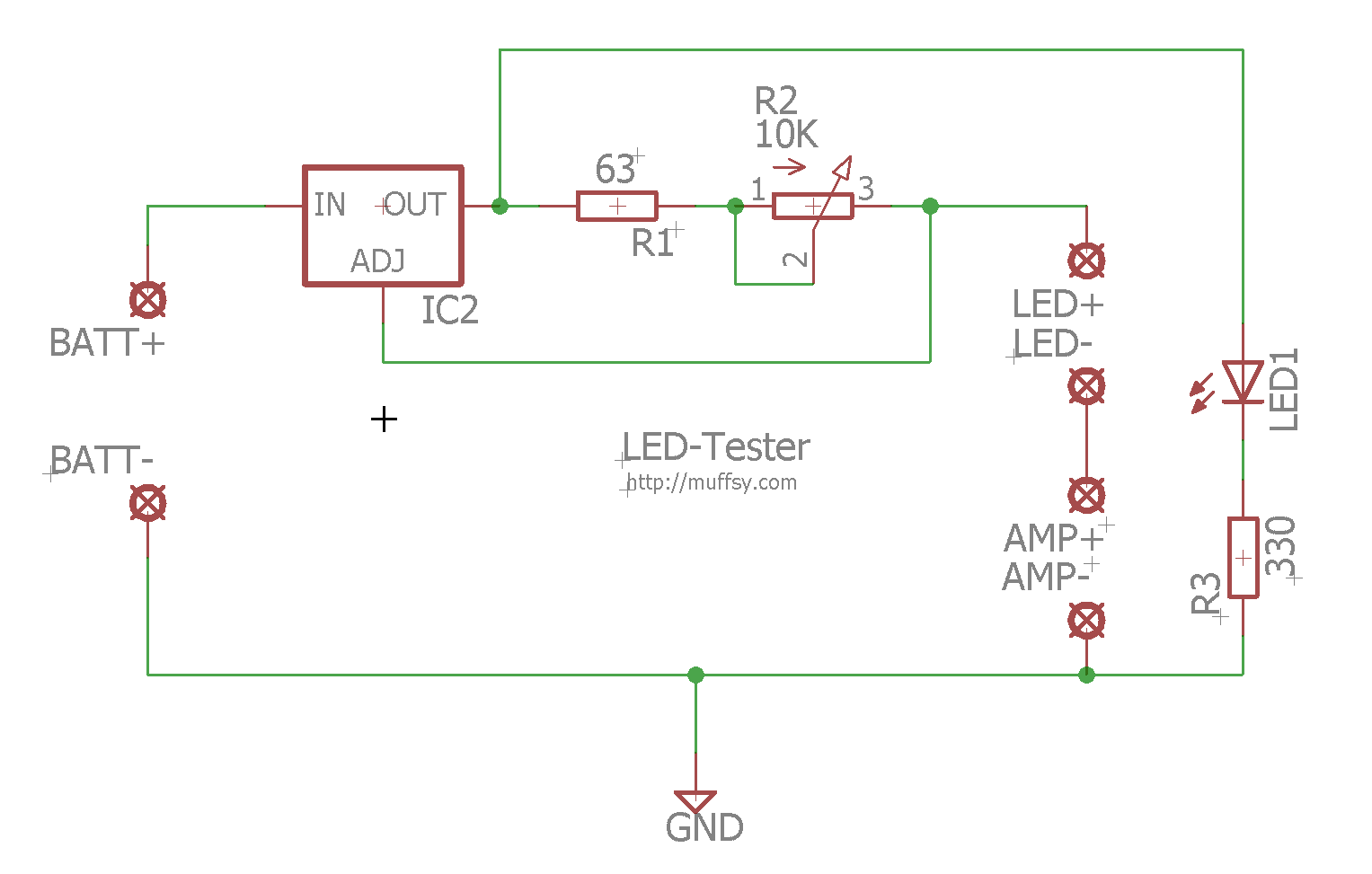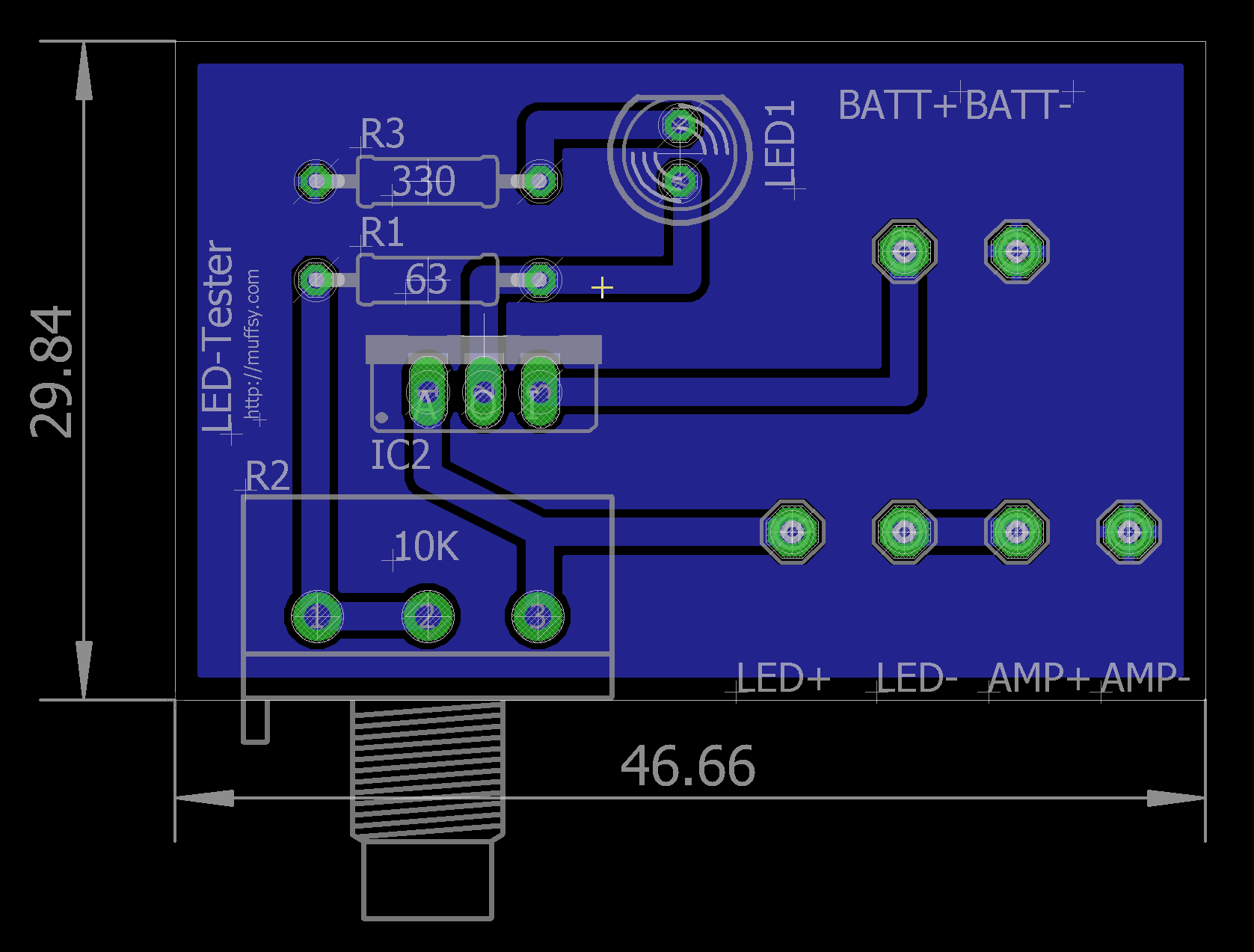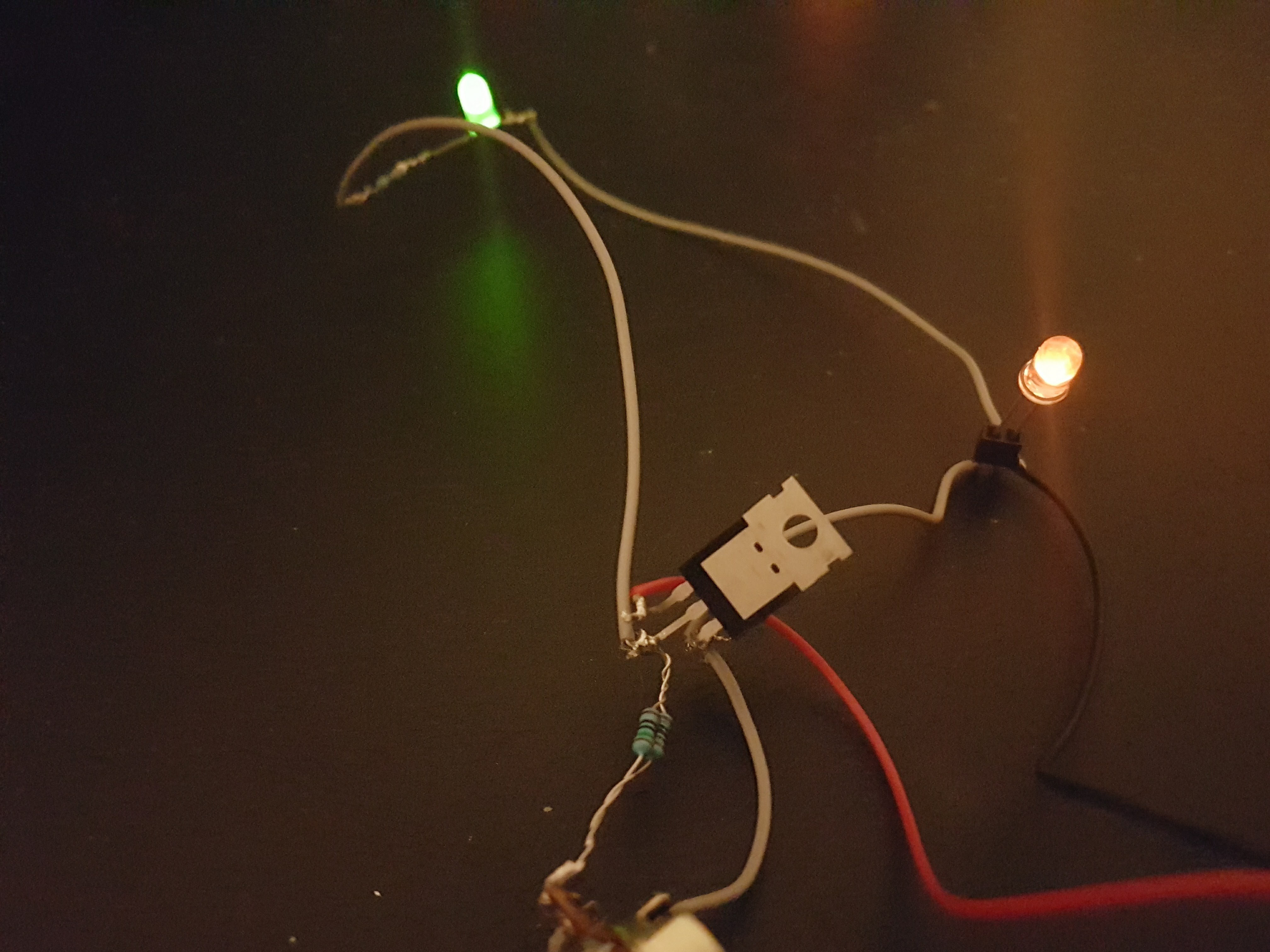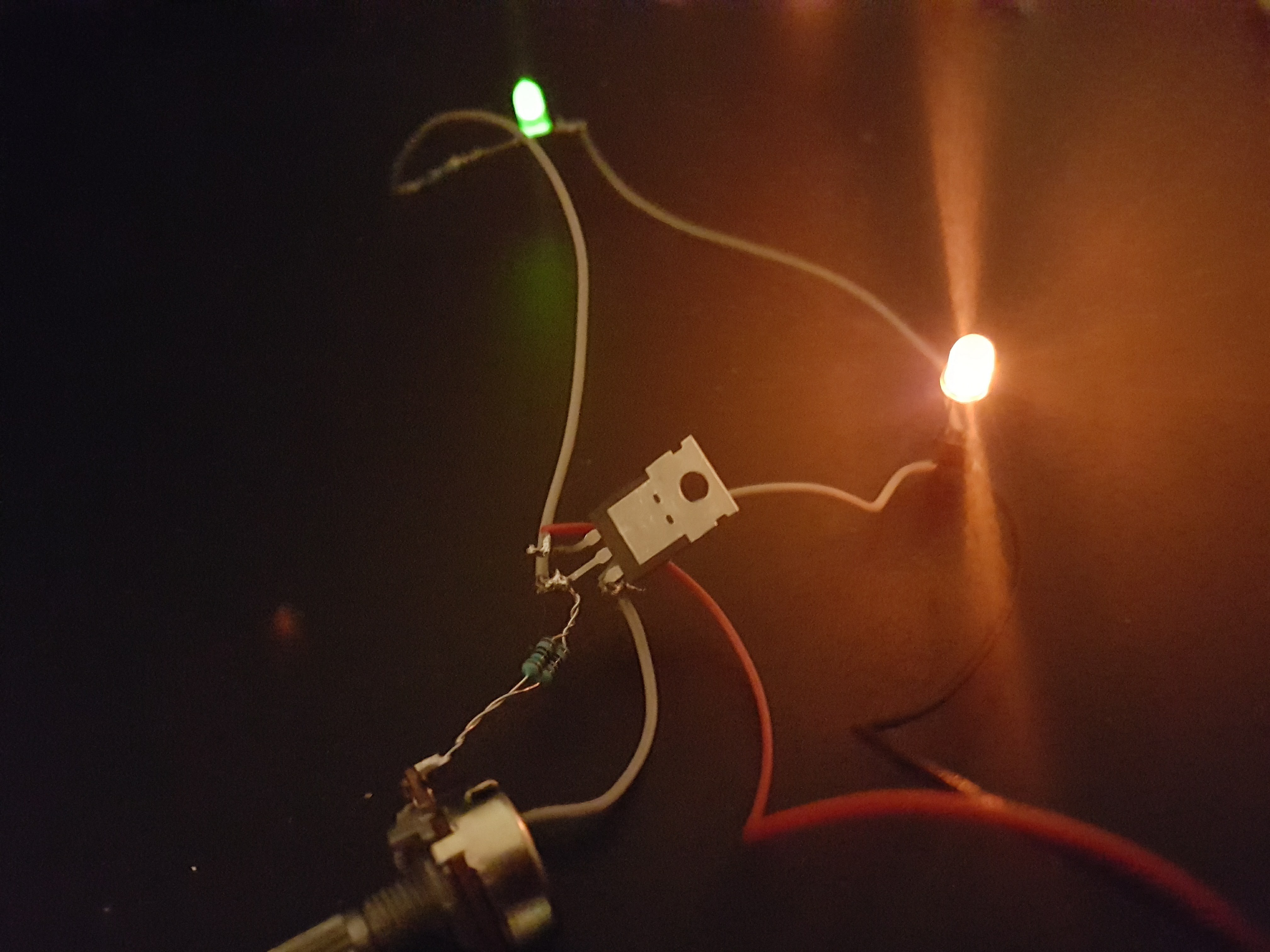The discussion in the previous log showed that I'll never get less than 2-3 mA from an LM317, as that is the minimum current it can provide while still regulating. (Discussion here: https://hackaday.io/project/18624-muffsy-constant-current-led-tester/log/49640-testing-my-leds#discussion-list)
I looked for a way to make sure there was a current draw, while still allowing me to adjust the current to the "LUT" (LED Under Test), and found this: http://electronics.stackexchange.com/questions/211249/lm317-µa-constant-current-source-possibility
An LED from LM317's power output to ground acts as a load and draws current from the voltage regulator. Some 4 mA would be sufficient.
Here's the updated schematic:

Here's a PCB with the new circuit, the Eagle files have been replaced with this version:
 The pictures didn't come out particularly well, as the highest brightness gave a lot of glare and the lowest brightness seems brighter than it really is.
The pictures didn't come out particularly well, as the highest brightness gave a lot of glare and the lowest brightness seems brighter than it really is.
Lowest brightness (it's barely visible in real life):

Highest brightness (pretty darn bright):

Discussions
Become a Hackaday.io Member
Create an account to leave a comment. Already have an account? Log In.
I didn't take LDs into consideration, and there are several ways of testing RGB LEDs, none of which are in here as well. Neither are power LEDs.
This scratches my itch, and the design is open for anyone to modify. :)
Are you sure? yes | no
Per my comment on the last log:
Might consider throwing a ~4V zener-diode, between Adjust and GND, so as to limit the voltage going into the DUT in case you reverse-bias it, by mistake. (Note that Zeners vary A LOT in their voltage, depending on the current). Or, maybe better, a string of regular diodes totalling around 4V (slightly more than your highest expected LED-forward-voltage).
Are you sure? yes | no
I've tested a whole lot of LEDs the wrong way around. None of them were damaged the least, even at 20 mA. I considered a diode on the power input, but seeing as it's impossible to attach a 9V battery the wrong way, I decided not to.
(It's possible to attach the cables from the 9V battery clip the wrong way, but it's also possible to mount the LM317 the wrong way around. It's not a commercial product that needs all sorts of safety precautions.)
The Eagle project files are freely available, so it can be changed to suit anyone's needs.
Are you sure? yes | no
I've never blown an LED by reverse-biasing it, but I'm pretty certain I've done that to laser-diodes ;)
Are you sure? yes | no